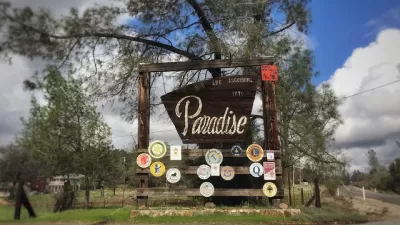Halloween may mark the world reaching 7 billion. Population author Vanessa Baird looks beyond the number into both fertility and consumption rates, showing why it is a mistake to get caught up with the increase in population rather than consumption.
"Today, according to the UN's population division, 42% of the world's population lives in countries with fertility at below replacement level. Another 40% are in intermediate fertility countries, where people are replacing themselves. And the remaining 18% are living in countries with high fertility, mostly in sub-Saharan Africa, where women may be having five or more children on average."
However, according to Baird, the consumption rate of one American or European may be the equivalent of an entire village of Africans.
Nor does Baird target the low population increase in the developed nations as a means to reduce emissions.
"Population is certainly a multiplier, but that does not make it the cause of the problem. As (Green Left Weekly) writer Simon Butler puts it: "People are not pollution. Blaming too many people for driving climate change is like blaming too many trees for causing bushfires."
Instead, she advocates for low-emission policies - transitioning from fossil fuels to renewables and from the single-occupant vehicle to low or zero-polluting modes.
"The excessive focus on population is a dangerous distraction from the core problem, which is not how many of us there are but how we use the planet and share its resources."
Thanks to Patricia Matachek
FULL STORY: Why population hysteria is more damaging than it seems

Trump Administration Could Effectively End Housing Voucher Program
Federal officials are eyeing major cuts to the Section 8 program that helps millions of low-income households pay rent.

Planetizen Federal Action Tracker
A weekly monitor of how Trump’s orders and actions are impacting planners and planning in America.

Ken Jennings Launches Transit Web Series
The Jeopardy champ wants you to ride public transit.

How Project Connect Would Change ‘The Drag’
A popular — and sometimes deadly — Austin road will exchange car lanes for light rail.

Milwaukee Road to Get Complete Streets Upgrades
The city will reduce vehicle lanes and build a protected multi-use trail including bioswales and other water retention features on its ‘secret highway.’

Tackling Soil Contamination With Nature-Based Solutions
Los Angeles County residents and experts are turning to nature-based methods like bioremediation to address long-standing and fire-exacerbated soil contamination without resorting to costly and disruptive removal.
Urban Design for Planners 1: Software Tools
This six-course series explores essential urban design concepts using open source software and equips planners with the tools they need to participate fully in the urban design process.
Planning for Universal Design
Learn the tools for implementing Universal Design in planning regulations.
Ada County Highway District
Clanton & Associates, Inc.
Jessamine County Fiscal Court
Institute for Housing and Urban Development Studies (IHS)
City of Grandview
Harvard GSD Executive Education
Toledo-Lucas County Plan Commissions
Salt Lake City
NYU Wagner Graduate School of Public Service




























